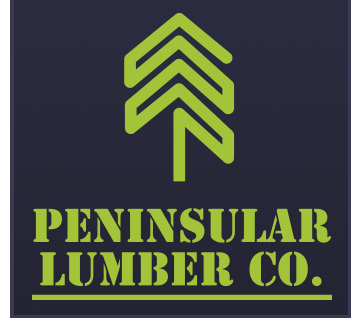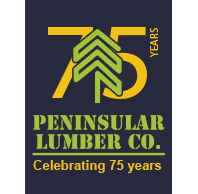Choosing the Right Lumber for Your Next Construction Project: A Comprehensive Guide
When embarking on a construction project, one of the most important decisions you’ll face is selecting the right lumber. Whether you’re building a new structure or renovating an existing one, choosing the appropriate materials will impact the longevity, durability, and aesthetics of your project. Rough cut lumber projects are becoming increasingly popular due to the natural and rustic appeal this type of wood offers. But before making a decision, it’s crucial to understand the different types of lumber available, how to source them, and which is best suited to your specific needs.
In this comprehensive guide, we’ll walk you through everything you need to know about choosing lumber for your next construction project, focusing on rough cut lumber, where to source it, and how to use it effectively.
What Is Rough Cut Lumber?
Rough cut lumber refers to wood that is cut directly from the log, often leaving the surface with a rough texture. Unlike planed or finished lumber, which is smoothed out in the final stages of processing, rough cut lumber retains its natural appearance and texture. This gives it a rustic, raw look that’s highly sought after for specific types of construction projects, especially those aiming for a more natural aesthetic.
Rough cut lumber projects are popular for uses like barns, cabins, outdoor structures, and even some modern interiors. The versatility of this wood lies in its durability and strength, as it’s often cut thicker than standard dimensional lumber.
Why Choose Rough Cut Lumber for Your Construction Project?
There are several reasons why you might consider rough cut lumber for your next construction project:
- Aesthetic Appeal: Rough cut lumber has a distinct, rugged look that makes it ideal for projects requiring a more natural or rustic finish. It is often used in barns, cabins, fences, and decorative elements within homes to create a vintage or industrial vibe.
- Durability: Since rough cut lumber is typically thicker than standard lumber, it tends to be more durable and long-lasting, making it suitable for heavy-duty projects like building barns, sheds, or outdoor decks.
- Cost-Effective: Because rough cut lumber undergoes less processing compared to finished lumber, it can be more cost-effective, depending on the lumber yard you source it from. This makes it an attractive option for larger projects where you need more material without exceeding your budget.
- Customization: One of the benefits of rough cut lumber projects is that the wood can be customized on-site. You can mill or plane the lumber to your exact specifications, allowing for greater flexibility when working on custom construction projects.
Common Applications for Rough Cut Lumber
While rough cut lumber can be used in many different types of construction projects, it is most commonly applied in:
- Barns and Sheds: The rugged nature of rough cut lumber makes it perfect for outdoor structures like barns and sheds. It provides a strong, weather-resistant framework that can withstand harsh elements.
- Fencing and Outdoor Furniture: Many homeowners choose rough cut lumber for fencing and outdoor furniture due to its rustic appearance and durability. The thick, sturdy boards can last for years when properly treated for outdoor use.
- Interior Walls and Flooring: In more contemporary applications, rough cut lumber is also being used for accent walls and flooring inside homes. Its natural, textured surface adds character and warmth to any interior design.
Understanding Lumber Grades
When selecting lumber for your construction project, it’s essential to understand lumber grades. These grades indicate the quality and strength of the wood, which affects its performance in different applications.
- Grade 1 or Select: High-quality lumber with minimal defects such as knots or splits. This grade is typically used for projects where the appearance of the wood is important, such as furniture or interior walls.
- Grade 2: This grade includes some visible imperfections but is still structurally sound. It’s commonly used in general construction projects, especially when the wood will be covered up (e.g., in framing).
- Grade 3 and Below: Lumber in this category has noticeable imperfections and is often used for more industrial or rustic applications. This grade is commonly selected for rough cut lumber projects due to its rugged appearance.
Sourcing Lumber from a Quality Lumber Yard
Finding the right lumber yard is just as important as choosing the right type of wood. A reliable lumber yard will provide a variety of lumber options and grades, allowing you to select the materials that best suit your project’s needs.
When visiting a lumber yard, here are a few things to consider:
- Selection: Does the lumber yard offer a wide range of options, including rough cut and finished lumber? Look for a yard with a diverse inventory to ensure you have access to the materials you need.
- Quality: Inspect the quality of the lumber available. A reputable lumber yard will offer well-maintained, properly stored wood that has been kiln-dried or treated as necessary to prevent warping, splitting, or rotting.
- Expertise: A quality lumber yard will have knowledgeable staff who can guide you in choosing the right type of lumber for your project. Don’t hesitate to ask questions about the different grades and types of lumber they offer, as well as the best uses for each.
- Customization: Many lumber yards offer additional services such as custom cutting, planing, or milling. This can be particularly useful when working on rough cut lumber projects, as the wood may need to be sized or processed on-site.
Treating and Maintaining Rough Cut Lumber
One consideration with rough cut lumber is its susceptibility to weather and environmental elements. To extend the life of your lumber and ensure the stability of your structure, it’s important to treat it with a protective sealant. This will help prevent moisture damage, warping, and insect infestations.
Here are some tips for maintaining rough cut lumber:
- Sealant Application: Apply a wood sealant or stain that is specifically designed for outdoor use. For interior projects, consider using a wood conditioner or oil to maintain the natural look while adding protection.
- Regular Maintenance: Even with a sealant, rough cut lumber will require occasional maintenance, especially in outdoor applications. Periodically inspect the wood for signs of wear or damage and reapply sealant as needed.
- Proper Storage: If you’re storing excess lumber for future use, ensure it’s kept in a dry, covered space to avoid warping or mold growth.
Contact Peninsular Lumber in Tampa for Your Next Project
Choosing the right lumber for your next construction project is a critical step that will influence both the durability and aesthetic of your final product. For those seeking a rustic, natural look combined with durability and cost-effectiveness, lumber projects are an excellent choice. By understanding the types of lumber available, visiting a reputable lumber yard, and treating your wood properly, you can ensure your project is built to last and visually striking.
With careful planning and the right materials, your construction project can stand the test of time while enhancing the overall appeal of your space.
Visit us at Peninsular Lumber in Tampa for Your Next Project



